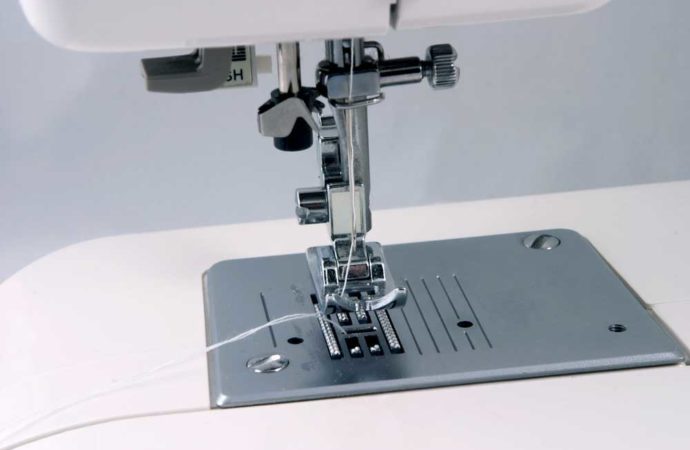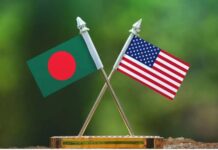How can Bangladesh rise to the challenge?
There have been several interesting developments with regard to the existing dynamics within the paradigm of the Ready Made Garments industry. The renewed attention about its different facets has partially been evoked by its continued success in being able to overcome challenges. It has also been due to the interactive engagement by some of the stake-holders, both from within as well as from abroad.
This interest in this important sector, employing more than 4.5 million workers, mostly women, was reflected through ILO’s decision to bring 225 additional garment factories under its Better Work (BW) program (sponsored by the ILO and the International Finance Corporation) by June 2017, and 500 more by 2021. At present, the BW operates in seven countries, across the globe — Bangladesh, Cambodia, Indonesia, Vietnam, Jordan, Haiti, and Nicaragua. Their present monitoring involves 1,300 factories, employing more than 1.6 million workers. In Bangladesh, presently, under this program, BW is covering 98 factories, employing 201,995 workers.
This scheme aims to improve working conditions, dismissal threats, abuse of probationary contracts, and social compliance within the matrix of growing competitiveness in the global garment supply chain.
Tufts University has revealed that the BW program has facilitated in achieving significant gains in the quality of life for workers in the factories and has also enhanced productivity and profitability for the factories concerned. Given this view, the possibility of greater association of the ILO in imparting BW training should assist Bangladesh.
One needs at this point to take a holistic evolving view pertaining to our RMG trade in the recent past. Exports of RMG from Bangladesh to the European Union rose by 4.2% in the calendar year 2015 and exports reached 8.0% growth in the first quarter of the current year. Compared to this, exports of RMG from Cambodia, Pakistan, and Vietnam to the EU have also made significant gains.
Cambodia’s RMG exports in particular shot up by 12.6% in 2015 and again by 17.7% in the first three months of 2016. Apparently, this growth in the other Asian countries has been due to the EU shifting their sourcing during this period from China and also because several Chinese companies moved some of their clothing production to other countries in order to benefit from abundant supplies of cheap labour and also preferential terms of trade, applicable for these countries with regard to their exports to the EU and the US.
Bangladesh has shown the world how commitment can take a country forward. It has been a difficult task. However, there is no need for disappointment
It is understood that some manufacturers in Bangladesh have also been trying to take advantage of this emerging situation. However, their results, till now, have not been very successful.
One holdback has been the excessive monitoring by outsiders of the different factors associated with safety and other elements pertaining to our RMG industry since the Rana Plaza disaster. The other factor has been the rise in export costs (transportation of RMG items by air to destinations) after the recent spate of terrorist attacks in Bangladesh. Other factors have also affected the initiatives undertaken by RMG entrepreneurs to diversify their product destinations in 11 non-traditional markets — Australia, Brazil, Chile, China, India, Japan, Korea, Mexico, Russia, South Africa, and Turkey.
Factors like higher duty and complex rules of origin have not been helpful for Bangladesh products. BGMEA has also indicated that failure to expand RMG exports to Latin America and Central American countries are also partially due to the difficulties associated in visa processing facility. It would also be important to note here that though the EU accounted for $17.15 billion, about 61% of Bangladesh’s total RMG exports ($28.09bn) last fiscal, only $143.77 million came from nine East European countries — Bulgaria, Estonia, Hungary, Latvia, Lithuania, Romania, Slovakia, Slovenia, and Croatia.
In addition, high import duty, the principle of deferred letters of credit and additional charge of VAT, has affected Bangladesh’s hope of increasing RMG export to Russia. The only optimistic note came from our exports to Poland and the Czech Republic. Our overall exports to these two countries grew remarkably to $616.27m and $414.37m respectively last fiscal against $322.74m and $63.75m in FY2011-12. Bangladesh RMG manufacturers are trying to take their challenges in their stride and overcome them through innovative solutions. Analysts noted towards the end of August that diversion of orders from Bangladesh’s rivals has opened up new opportunities for local denim goods producers.
To cope with increasing demand, the country’s denim industry is taking steps not only towards expansion of production facilities but also upgradation. This development has assumed importance because 66 international brands have already expressed special interest in this Bangladeshi RMG sector. These buyers from the EU and the USA are interested to source denim products from Bangladesh bypassing China, India, Pakistan, and Vietnam.
On the other side, there has also been the disappointing report in the media on September 27 that after warnings from Alliance and Accord, international buyers from the EU and the US have decided not to buy RMG products manufactured by nearly 150 Bangladeshi RMG industrial units. Apparently, despite criticism, these industrial units failed to achieve the desired work-place safety requirements suggested by these monitoring authorities.
This measure has lent greater importance to some of the observations made by Lilianne Ploumen, the minister in charge of Foreign Trade and Development Cooperation of the Netherlands during her visit to Bangladesh at the end of September. She accepted that Bangladeshi producers had brought in expensive improvements in their factories, and had also marginally raised the salaries of workers.
In this context, she also indicated that there was need for more transparency among all the stake-holders in the supply chain — the retailers, producers, and the workers. She also noted that despite many expensive improvements within the manufacturing infrastructure, retailers’ payments to the garment makers had risen only by 1% in 2015 compared with 2012. This had to be addressed by the retailers.
One needs to add here that she appears to have overlooked the massive profits being made by middle-men who function in their capacity as representatives of buyers. This is an area that also needs to be addressed more seriously. A reduction in their margins of profit and increased prices for RMG products could enable the manufacturers to provide better wages and improved social care for the workers, particularly the women workers. This, in turn, would also afford better human rights for them.
In the meantime, the wise decision by our government to form a new Remediation Coordination Cell (RCC), to start working in full swing from 2018 after Accord and Alliance have completed their task, should help in the continued positive monitoring of the RMG industry.
Initially, the RCC will focus on building available capacity of the Department of Inspection for Factories and Establishments (DIFE). However, after taking full responsibility in 2018, the Cell will provide all necessary support to the garment sector for maintaining standard, safety, and security.
All stake-holders need to work together. Bangladesh has shown the world how commitment can take a country forward. It has been a difficult task. However, there is no need for disappointment.
Muhammad Zamir, a former Ambassador, is an analyst specialising in foreign affairs, right to information, and good governance. He can be reached at muhammadzamir0@gmail.com.
Source: Dhaka Tribune










